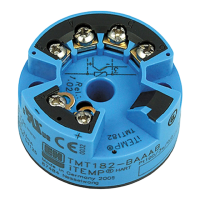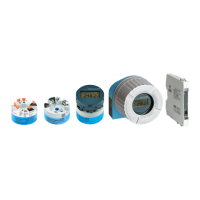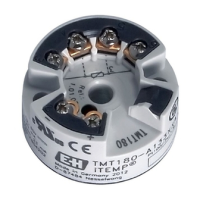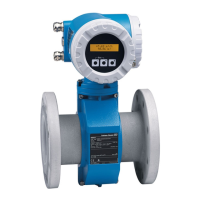Use in safety instrumented systems Temperature transmitter iTEMP TMT82
28 Endress+Hauser
A0034407
6 Current pattern during proof test A and B
A High alarm (≥ 21.0 mA)
B 20 mA
C 4 mA
D Low alarm (≤ 3.6 mA)
1 Measuring mode
2 Lower range value adjustment (two-point calibration)
3 Upper range value adjustment (two-point calibration)
4 Restart device (via HART or plug-in display )
5 High alarm (≥ 21.0 mA)
6 Low alarm (≤ 3.6 mA)
7 Measuring mode
5.4.3 Test sequence C
Test sequence C
1. Check the plausibility of the current measuring signal. The measured value must be
assessed on the basis of empirical values deriving from the operation of the plant.
This is the responsibility of the operator.
2. Check the safe state (High and Low alarm).
Check the two alarm states (High and Low) by restarting the device via plug-in
display . Alternatively, you can also check the restart using the corresponding
function in the operating tool used or via HART command 42 (disabling any device
write protection for this). → 26 or → 26
The alarm states, High alarm (≥ 21.0 mA) and Low alarm (≤ 3.6 mA), are output
consecutively for longer than 4 s in each case.
Both current values must be checked.
During the test sequence, the current output of the device typically behaves as
illustrated in the graphic above. Point 2 and 3 are dispensed with. → 6, 28
The restart must not be carried out by powering down the device.
58% of dangerous, undetected failures are detected using this test (proof test coverage,
PTC = 0.58). Test sequence C is not permitted for a commissioning check.
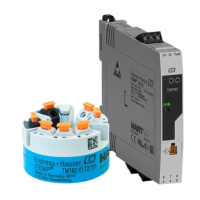
